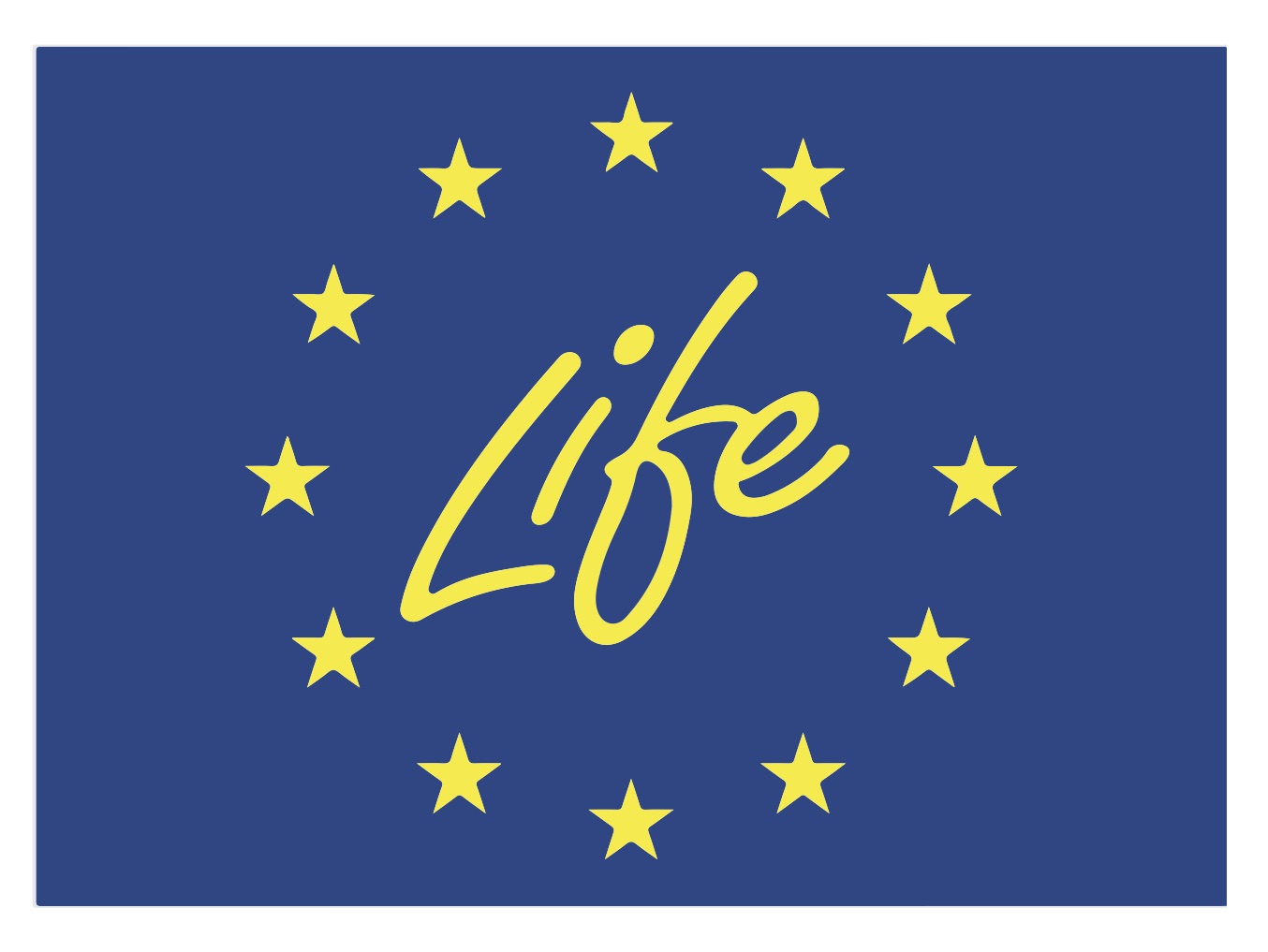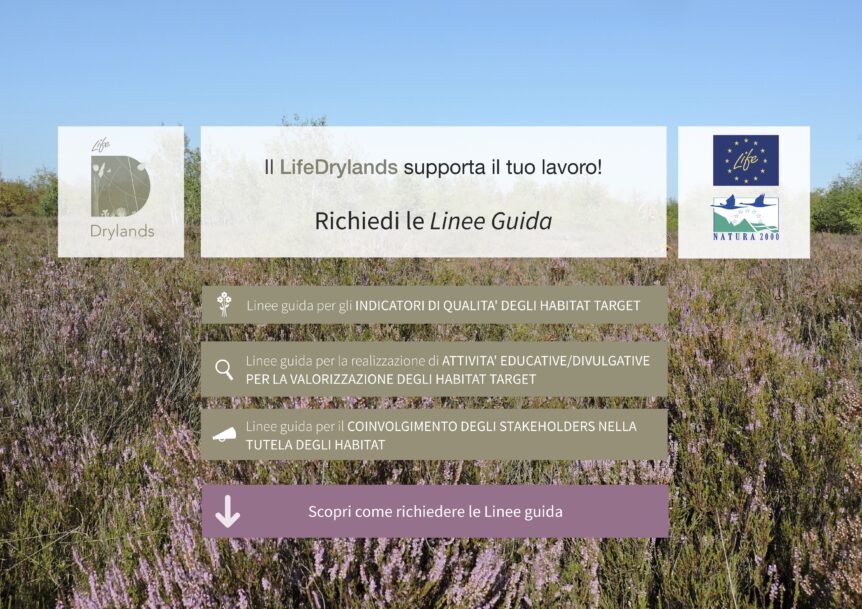From our project experience, we have developed 3 guidelines we believe will be useful to all of you who are involved in environmental issues and care about the respect, conservation, and enhancement of natural environments.
HOW TO REQUEST THE GUIDELINES
To request the guidelines, you need to fill out the online form available at the following
https://docs.google.com/forms/d/e/1FAIpQLSd-VL-gwRofFYdpqrtYfla7Mw2FJCBbaf9GOM3jdVBhHetYcA/viewform
The questionnaire aims to identify individuals who wish to participate in Action E2 of the LIFE DRYLANDS project and who are therefore interested in receiving one or more of the 3 guidelines described below. The guidelines will be disseminated in Italy and other EU countries to potential interested parties who will be asked to evaluate their application, providing a report on the experimentation carried out and any problems encountered and/or improvements to propose.
Therefore, we kindly ask you to provide us with some data and indicate your interest in receiving one or more guidelines, possibly indicating which ones. Later, you will be sent the LINK to download them.
The guidelines concern experiences gained during the LifeDrylands project. Below you will find a brief description of each guideline with a summary of its contents:
Guidelines for INDICATORS OF QUALITY OF TARGET HABITATS
> After a brief description of the monitoring actions and the peculiarities of the target habitats within the LifeDrylands project, the indicators developed for assessing the quality of these habitats (H2330, H6210, H4030) are described.
> The optimal structural characteristics and the most typical species of vascular plants, bryophytes, and lichens are defined.
> When possible, some entomological species (Lepidoptera and Odonata) that can contribute to indicating the habitat quality are also mentioned.
> Deviating from the indicated percentage values and/or the absence of the reported typical species should be interpreted as warning signals to evaluate for possible management interventions. The function of these indicators is to complement those already existing at the national and/or regional level, with particular reference to the 3 target habitats in the Piemonte and Lombardia plain territories, on acid, acidophilic or acid-neutral substrates.
> They can also be considered as conservation objectives for the aforementioned target habitats of the LIFE Drylands project.
> Furthermore, since these habitats are also present in Central Europe, they can serve as a reference for evaluating their quality in that context.
Guidelines for the implementation of EDUCATIONAL/DISCLOSURE ACTIVITIES FOR THE ENHANCEMENT OF TARGET HABITATS
> Who it is addressed to: environmental guides and park guards of natural parks, teachers and educators, those involved in educational and dissemination activities at botanical gardens and other museums, university students of natural sciences and in general of cultural mediation disciplines, individuals participating in other LIFE projects…
>After briefly describing the LifeDrylands project (with its target habitats and planned actions), the guidelines delve into the methodological approaches to be used in the implementation of educational and dissemination activities;
>The Interpretive approach is proposed as an effective tool for scientific dissemination and the implementation of educational activities on project themes; some aspects related to participatory methods and multidisciplinary perspectives in the development of environmental and scientific educational/dissemination activities are also described;
> Good practices in the implementation of such activities are then described and, as Case studies, some specific examples implemented within the LifeDrylands project (a project with secondary schools, the creation of the Discovery-Kit, examples of events with the public).
GUIDELINE 3
Guidelines for STAKEHOLDER INVOLVEMENT IN HABITAT PROTECTION
> After defining the reference context of the LifeDrylands project (target habitats, intervention areas, pressures/threats, ecosystem services, socio-economic survey), these guidelines describe the objectives of stakeholder involvement and the stakeholder targets that will be involved.
> Tools (such as questionnaires, educational kits, specific cards, etc.) and methods (specific events, conferences, etc.) are then described that can be used to achieve these objectives, depending on the different stakeholder targets.
> Concrete examples of achievements within the LifeDrylands project are presented as practical cases.
If you would like to contact us, please write to info@lifedrylands.eu
More information is available on the project’s website: www.lifedrylands.eu\
///////////////////////////////
IT’S TIME FOR DRY HABITATS




